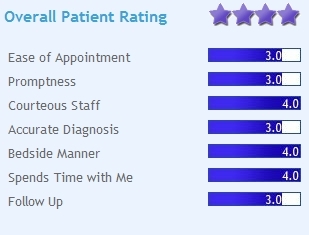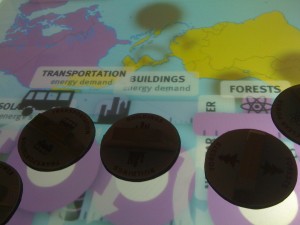Pronouncements of the death of privacy are clearly premature. Google’s initial choice to reveal one’s email contacts was a significant mistake – disturbing for some users and harmful or dangerous for others, such as consultants whose clients were revealed, and abuse victims whose networks were revealed to stalkers.
The clear violation of the boundary shows that there are, in fact, real boundaries that can and shouldn’t be violated. That said, there is also real change happening in technology and in social norms relating to the changing infrastructure of society.
So, what is the same, and what is getting different?
Privacy protection is still needed, in fact and concept
Tim LeBerecht presents the perspective that privacy is done for, collateral damage of the trend toward online broadcasting. This has been disproven.
Facebook is only reacting to a larger social trend as it strives to become an asymmetrical and therefore more growth-enabled network (or communications platform) – like Twitter. Privacy, at least a more traditional notion thereof, is the collateral damage of this strategic agenda. With the value of reciprocity (narrowcasting) succumbing to the prospect of exponentiality (broadcasting), privacy is no longer commercially exploitable.
Adrian Chan doesn’t say that privacy is dead, but suggests that the conventional thinking around privacy regarding protection, security, and safety from exposure is the wrong frame.
Like many of you, I think the opposition of private and public is now problematic at best, if not counterproductive. First off, privacy suggests to me individual rights of ownership, protections and security, safety from exposure and the risk of misuse and abuse of personal information. It centers on the individual and his or her protections. I prefer to think of the Self, which is for me already social(ized), and for whom “privacy” is negotiated constantly through interaction, communication, and other social and relational transactions.
The buzz launch privacy error shows that the conventional frame about protecting the individual is still necessary and important. (Which Adrian acknowledges in a recent post on the Buzz launch privacy mis-steps.
Privacy doesn’t express identity – identity is created socially
A base level of privacy protection is needed. Given that, the concept of privacy protection is not adequate to describe the needs of individuals around identity and expression.
Adrian Chan and Stowe Boyd seem to disagree about terminology, but have related opinions about the social construction and expression of identity.
In Adrian’s words, ” I prefer to think of the Self, which is for me already social(ized), and for whom “privacy” is negotiated constantly through interaction, communication, and other social and relational transactions.”
Stowe Boyd describes a similar concept, and adds nuances about the ways that people form identity in social contexts. The problem with the concept of articulating identity in terms of privacy, says Stowe, is that it frames the self as something that exists outside the social realm and is shared in the social realm. Instead, the self is to a large extent generated in the social realm, and its expression depends on the social norms in various different social circumstances.
From a privacy viewpoint, this fracturing of the totality of experience is viewed as selectively revealing potentially overlapping classes of information about my personal life with different subsets of my world. In the privacy take on the world, a person might be defined as the union of all the personalities they present to the world. People’s personalities in this worldview are thought of as atomic, but multifaceted….
From a publicy viewpoint, something very different is going on. In this zeitgeist a person has social contracts within various online publics, and these are based on norms of behavior, not of layers of privacy. In these online publics, different sorts of personal status — sexual preferences, food choices, geographic location — exist to be shared with those that inhabit the publics. So, in this worldview, people are the union of a collection of social contracts, each of which is self-defined, and self-referential. The norms and mores of a foodist service — eat everything and post everything you eat — may be completely distinct from those about sexual interests, or sports, or social technology on the web. These streams of updates don’t have to add up to a picture that defines the individual, any more that we are defined by the stamps on our passports or the complete sequence of hats we have owned.
In this worldview, a person is a network of identities, each defined in the context of the form factor of a specific social publics. There is no atomic personality, per se, just the assumption that people shift from one public self to another as needed.
Stowe’s perspective focuses on the content and norms of the environments in which social identity is created, while Adrian is focusing more closely on the individual negotiations within those environments; both emphasize the way the self exists socially and is created socially.
So what is public?
Adrian takes issue with Stowe’s use of the new word “publicy”, suggesting that there is no need to re-invent and modify concepts of the public sphere.
Public, to me, suggests the public sphere, and the formal, institutional, legal, economic, cultural and other forces that organize it. Conceptually, the public sphere is orthogonal to the social and to different kinds of sociality. In social theoretical terms, the public refers to a kind of social organization in which individuals don’t really experience themselves as acting and interacting subjects. It is “constructed” on the basis of those interactions perhaps, but the term captures anonymous sociality — not, in my view, the one experienced when socializing online.
I disagree with several elements here. Adrian implies that the concept of the public sphere exists and is stable – I think that there are fundamental changes in progress.
The concept of public sphere that we have today was formed in urban public squares and they heavily reshaped by mass media – newspapers, radio, television. As Adrian notes, in the age of mass media, individuals are strangers in the crowd – people do not act or interact. Also in the age of mass media, power of the press belongs to the one who owns the printing press – the power to broadcast is concentrated, the range of information is limited.
The new public network is substantially different from the old broadcast forms. Ubiquitous publication is new. 2-3 Billion people can now share text; hundreds of millions are sharing videos. Ubiquitous discoverability is new. And participants in the new public sphere increasingly aren’t anonymous strangers – more than 400M people are active users of Facebook, which requires real identity.
What people do in public is visible, discoverable, and increasingly linkable to real identity. This is a new circumstance in the world. Social forms and norms are morphing in conjunction with these new things. (I’m not saying that technology shapes society; technologies and social realities co-evolve).
The new discoverable public sphere isn’t quite universal – google doesn’t reach everything. Firewalls contain large amounts of information within organizational boundaries, but within these boundaries, search engines and links make massive amounts of information discoverable. And organizations are seeing that there are powerful benefits to be gained by sharing and discovery, inside and across organizational boundaries.
With defined firewalls, overlapping follow lists and group memberships, and changing relationships and group lifecycles, the map of the more-public sphere is complicated.
Tim Leberecht sees the new public sphere not in opposition to privacy, but on a continuum with it. “Thus, it makes sense to replace the strict privacy-publicy opposition with a multi-layered continuum along progressive levels of sociality. Also, Tim sees sharing in terms of control – On Facebook and other networks, you can pick and choose the people you want to meet and share ‘presence’ with; in a restaurant, bar, and other public spaces, you can’t. Exclusivity in the real world needs to be earned, whereas online it is a given.
I agree with Tim that the binary opposition between “public” and “private” is wrong. But I disagree with Tim’s spacial metaphors to describe the relationship. I don’t think there is any single scale that runs from “more private” to “more public”. I prefer Kevin Marks’ discussions of overlapping publics, and Stowes descriptions of how identities are constructed within associations. Also, I disagree that the primary operation in sharing is about “control”. It is about constructing identities, as Stowe describes. It is about the flux of relations between individuals, and among individuals and their groups, as Adrian Chan describes.
Stowe Boyd sees the difference in the online public sphere as an orientation toward time, vs. space. “Online, we share time, not space. We are not actually in a restaurant together: we are using Brightkite, and I am playing along with the premises of the social conventions of Brightkite by posting that I am in Momofuku, The Slanted Door, or Fatty Crab.”
This is an interesting distinction, but not the most salient one, I think. The old world of mass media was also about sharing time – it was about millions of people seeing the same sitcom and the same news broadcast on the same night. Digital media do as much to break up shared time as they do to unify time – for example, people watching movies on their own schedule, and using comments, likes/ratings, and share gestures to express opinions, affiliations and connections.
Even when people do share time in near-synchronous exchanges on Facebook or Twitter or Buzz, the increasing ability to search, curate, and browse shared artifacts and identities will be very important aspects of discoverable life. In the physical world, edifices and public spaces were used to express shared identity, and the decoration of houses and homes expressed personal and household identity. In the online world, profiles were the first step, but the curation of streams will be important forms of expression of both personal and shared identities.
New norms
With this new public sphere shaped by discoverability, there are emerging norms that favor more sharing, transparency and discovery, for individuals participating in social life, and for organizations pursuing some mission or goal. There are also emerging and disputed norms about the discoverable expression of varying aspects of identity. Some workers get fired – and some get hired – as a result of personal expression online.
Stowe contends that the new social contract will be that faceted expressions will be seen as mutually exclusive.
Publicy says that each self exists in a particular social context, and all such contracts are independent…. and any individual’s participation in a specific online public does not have to be justified in a global way, any more than the cultural mores of the Berber Tuaregs need to be justified from the perspective of modern Western norms.
I don’t believe this is quite how the new norms will play out. I suspect we’re entering a world that is like Jane Jacobs’ urban village, where people are keeping an eye out for what’s happening on the street. There is a lot of visible information and people choose what to pay attention to when.
Another changing sphere of norms and practices is in the area of presence and attention, given that sharing time is one of the properties of the new public sphere. How are people available to each other, what modes do they use, when do we attempt to focus vs. split attention, what expectations to people have of others. Howard Rheingold wisely expresses the believe that “attention is the new literacy” – that people will need to evolve new practices and disciples for handling and communicating attention.
New words and concepts
New norms, conventions, and practices are emerging in this changed reality. New words and concepts will be needed to describe it, or existing words will need to morph their meaning.
Stowe Boyd proposes the term “publicy” to mean the set of expectations around being public – being online, time-oriented vs. space oriented, and existing within overlapping, contextually-determined publics.
Adrian Chan doesn’t like the neologism, arguing that “publicy is not only new and thus obfuscating, but sacrifices the possibility of leveraging existing theoretical arguments.” Instead, Adrian prefers “sociality”, which he uses to describe a bottom-up view of a “social field”, for its organization, relations, and means of reproduction.”
Thinking about socialities, we ask not what they are but how they are organized. What are the relations between members? How do these relations become reintegrated in how members relate differently or uniquely to themselves? If we believe that attention, presence, communication, games, or other kinds of organization are involved, then to what effect and with what outcomes? These forms are often temporary, but meaningful nonetheless because they produce a great deal of communication (which is captured)….
Focusing not on publics but on socialities also shifts emphasis to dynamics. For any type of social organization, ask what can it do? How is it assembled? This is an age-old philosophical question: What can a people do? Not what do people do, but recognizing that their relations are organized and their interactions structured, what is a people capable of?
Adrian is interested in established anthropological questions: “What types of talk and what kinds of social interactions does the sociality promote, and what types does it preempt? Does it promote the Self as image and ego, the group as collaborative, the whole as a unity with purpose? These are anthropological questions valid for us as observers of mediated cultures.”
I agree with Adrian that these considerations are important, and that analysis of social media tools and practices are often wanting because they neglect these considerations.
I don’t yet have a strong opinion about the term “publicy”, and disagree with some of what Stowe is saying about what the new public sphere may mean. What I like about “publicy” is the focus on something that I think has actually changed. (Tim Leberecht actually uses the term “sociality” to refer to this type of change). With respect to this change, I like the focus on the ability to be expressive in a discoverable way. To use the word in a sentence with this meaning, “Facebook violates my norms of privacy by disclosing my friends list to advertisers regardless of my wishes, but it violates my norms of (publicy? sociality?) by making it rather confusing to share public discourse with the world, something my blog makes trivial.”
From an individual perspective and an organizational perspective, it is interesting and useful to consider what may be actually different in capabilities and practices; what may be different because of exposure, discoverability, synchrony and time-shiftedness, and other changed properties. If there is something different in the world, then individuals and organizations have new opportunities, new requirements, new obligations.
Sociality? Publicy? A linguist would have fun monitoring the uses of these terms, and the meanings the terms are accreting. What I want to see is more public discussion of the social aspects of online experience and design, both from the perspective of what is already understood about social behavior, and what is changing.




